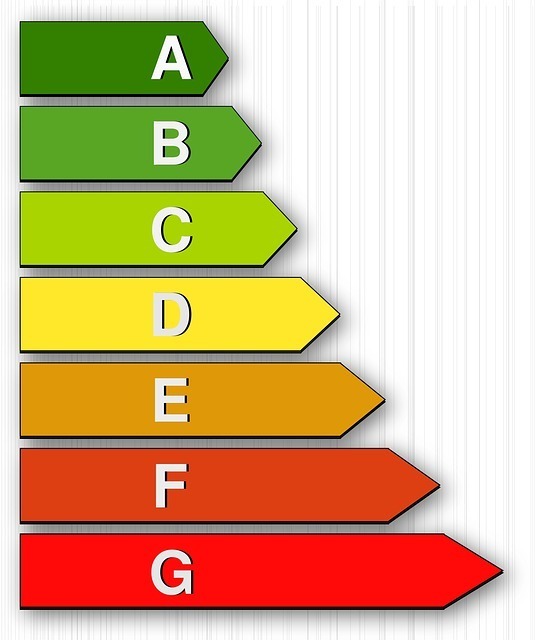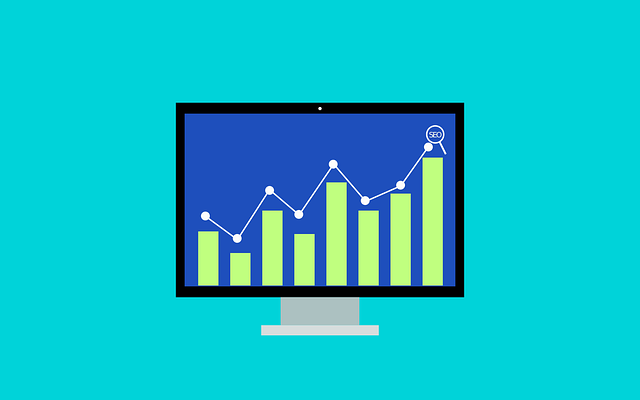
This is a custom HTML / JavaScript Element
In order To See Your Custom HTML/JavaScript Code in Action You Must Click On The Preview Page Button, Your Code is NOT going to be active in the edit mode
If you are trying to get a lot of people to visit your website, it's important to consider whether you are targeting unique visitors or views. Both are very important to your marketing campaigns, but they are very different. Having a lot of visitors but only a few views is not going to give you the results that you are looking for.
A unique visitor is defined as an internet user who visits a website or webpage at least once in a given period of time. Websites are typically able to determine how many unique visitors they have by tracking IP addresses, cookies, or other forms of identification. On the other hand, a unique page view measures the number of different pages viewed by all users, including both new and returning visitors.
When measuring website activity, it's important to remember that websites consider a user inactive after 30 minutes of inactivity on their site. Therefore, if a single user visits multiple pages within 30 minutes but then leaves the site for more than 30 minutes before returning to continue browsing, this counts as two separate page views and one unique visitor.

Page Views
Keeping track of the amount of unique visitors and unique page views that come to your website is critical for online publishers. This data can help you understand your audience's behavior and provide valuable insight into your marketing strategy.
Page views can be defined as the number of times a web page has been loaded, reloaded, or refreshed. This number is usually used to gauge the overall popularity of a particular webpage. It can also show differences in content and calls to action. The average session duration also correlates with the earnings that display ads bring in. Whether your audience engages with your website or not is also crucial for your success.
While the number of pages viewed is not always a reliable indicator of how popular a webpage is, it is important to take a comprehensive look at the numbers. This will help you determine if you need to change your content or optimize your site for better performance.
Page Sessions
Unique Visitors are a very important metric for online marketing. They show how many individual visitors visited your site during a specific period of time. This is a good indicator of how much your brand is growing. It doesn't necessarily mean that the visitors have a wide audience. But it does provide an insight into how engaged your users are.
Another important metric is page views. It is not uncommon for one person to visit your site 3 times a day. But the best thing to do is make sure your content is relevant to your users. You want to avoid making them feel like they are on a site that doesn't have what they need. If they can't find what they are looking for, they will "bounce" off.
A common mistake made by marketers is to confuse page views with visits. These two metrics are very similar, but there is a difference.

Returning Visitors
Having a high rate of returning visitors can be beneficial for your business. These visitors bring more visitors to your website, which leads to more conversions. In addition, they are likely to make purchases. So, it is important to increase your return visitor rate.
A good rate of returning visitors is 30 percent on average. However, your numbers may vary depending on your industry. Generally, the best way to attract returning visitors is to create content that engages your audience and increases their visit time.
Creating engaging content and sharing it through email and social media can help attract and retain returning visitors. A blog owner can also monitor user activity and map audience preferences. In doing so, he or she can invest more time in content that generates more interest.
Creating a custom conversion funnel based on past visitor interactions is another way to boost your return visitor conversion rate. Additionally, sending personalized emails to encourage users to stay active is a great strategy.
Paid Ads
If you're looking to increase your website traffic, it's important to understand how unique visitors and page views work. A high number of views doesn't necessarily mean a large audience. A high bounce rate could indicate that your site doesn't meet visitors' needs.
A visit is a series of pages requested by a single person, usually referred to as a session. The user visits page A, navigates to page B, and then re-visits page A. The total number of times the user lands on a specific page is called the pageview.

A session is a 30-minute period of time. The visitor's IP address is tracked to determine the number of people engaging in a browsing session. During this period, the browser is able to serve images, CSS, and php files. Each of these files counts as a hit.
Page views, on the other hand, are counted every time a person views a page. This is good news for publishers, as high page views are desirable if your site monetizes with PPV ads. However, this isn't the only factor that affects page views.
The Difference Between Pageviews and Visitors
Page views and visits are two different metrics that can be used to compare user behavior. Knowing the difference can help you better understand your audience's habits and performance. The more you know about these metrics, the better you can improve your marketing efforts.
Visits occur when someone arrives on your site from an external source. A page view occurs when a person clicks on a new page within your domain. It is also possible to visit the same page multiple times. However, if a user leaves the page and comes back later, the session will not count.
Google Analytics can track both of these metrics. By default, it counts each visit to your website. This is because users will usually deal with the site as a whole, rather than focusing on individual pages.

High page views are often a good indicator that a user is spending a lot of time on your website. However, they do not always mean a high-performing website. In fact, they can be a sign of frustration or an inability to find information. Often, it can be a sign that people are not engaging with deeper pages.
However, knowing the difference between page views and visits can help you determine what works for your site and how to fix problems. A balance between these two metrics is a good way to keep your site running well.
If you see a large number of high page views and low visits, this can indicate that a user experience problem is affecting your audience. However, you will need to look at the other metrics as well. For instance, if a user spends a lot of time on a certain page but is unable to complete a purchase, you may want to examine your checkout process.
Comparing Unique Pageviews Versus Unique Visits Versus Unique Users
If you're interested in comparing unique pageviews versus unique visits versus unique users, you've come to the right place. Each of these metrics tells a different story about how your website performs. You can find the right measurement for your site and your goals.

A pageview is a count of the number of times a page has been viewed by a user during a specific time frame. Page views are generated when a user first loads a page. This count increases by one every time the page is reloaded. So a single person loading the same page five times in a 30-minute session will generate five pageviews.
The unique pageview is a combined count of all pageviews generated during a specific session. This is a much better measure of web traffic than individual pageviews. It shows you how popular your content is. In addition, it eliminates page refreshes and revisits.
Pages and Screens report is a great way to find the top performing pages on your website. This is because it takes into account performance metrics like bounce rate, page title, and page ad clicks. Depending on your goal, you may want to see which pages are driving new visitors, returning visitors, or engaged visitors.
When you have a large email list, social media following, or a subscriber base, tracking return visitors is a good way to determine how many of them are coming back. These visits are often more valuable than new customers because they spend more money.
What Is Google Analytics and What Does it Do?
Google Analytics is a free marketing platform that offers insights into the activities and behaviors of your website's visitors. Using this data you can improve your site's performance and find ways to boost revenue.
The first step in getting started with Google Analytics is to sign up for an account. Once you are logged into your account, you can choose the type of property to analyze. For example, you can analyze referral traffic or organic search. You can also connect your account to Google Search Console to better understand your web traffic.
The Google Analytics home screen gives you a quick overview of your website's performance. You can also customize your report by adding different segments to your data. If you are tracking specific demographics or comparing one site to another, you can create custom segments that show a more granular level of detail.

To get the most out of Google Analytics, you will need to learn which metrics are most important to your business. A good start is to set up goals. These can be based on number of pages or screens per session, duration or destination. Your goal may be to boost conversion rates or to increase sales. Getting a handle on these metrics can give you the best idea of what your site is capable of.
One of the most exciting parts of using Google Analytics is its ability to track user behavior. It does so by placing a cookie on the visitor's browser and assigning a unique User ID to each visitor. During a visit, the visitor can view a website, click on a link, or even buy a product. Each of these actions is tracked, as are the number of times each visitor navigates your site.
In addition to tracking user activities, Google Analytics can tell you which pages are popular and which ones are going down in flames. This information can help you find and fix problems before they cause visitors to abandon your site. As well, Google Analytics can help you find the best sites to link to and the hottest keywords for SEO.
The most impressive of all, however, is the Google Analytics home page. This is where you can see your total site traffic, how many unique visitors have visited your site, how many sessions your visitors have had, and much more.
Taking the time to understand your site's performance will pay off in dividends. Whether you are using Google Analytics for your website or other digital properties, you can use the tool to discover new leads, improve your search ranking, and optimize your marketing efforts. And once you know what your visitors want, you can tailor your online content to meet their needs.
While Google Analytics does not provide a complete overview of the online world, it does give you a good understanding of your visitors' behavior. Using this data, you can make improvements to your website and improve your ROI.
FAQ

What are Browser Cookies?
Browser cookies are small pieces of data stored on your computer by websites. They allow websites to remember information about you and your preferences, such as what items you have in your shopping cart or whether you’re logged in or not. Cookies are also used to track website usage and collect analytics data.
Cookies are generally harmless and don’t contain any personal information, but they can be used to identify a user across different websites. Some people like to disable cookies in their browser settings for privacy reasons, while others find them helpful for customizing their online experience.
What is a First-Party Cookie?
A first-party cookie is a type of cookie that is set by the website you are visiting. It stores information about your visit, such as the pages you viewed, how long you stayed on the site, and any preferences you set. This helps the website remember things like your login information or language preference so that it can provide a better experience for you when you return.
First-party cookies are generally considered to be more secure than third-party cookies, as they are only created by the website itself and not by any external sources. They also tend to have shorter lifespans and are deleted after a certain period of time. This helps protect user privacy by preventing websites from collecting too much data about their visitors over long periods of time.
What Criteria Determine the Number of Page Views?
The number of page views is determined by a variety of factors, including the quality of content, the amount of promotion and marketing, and the overall appeal of the page. Quality content is essential to attract readers and keep them engaged on your page. This includes relevant topics, well-written articles, and interesting visuals. Additionally, promoting your page through social media or other channels can help to increase its visibility and drive more traffic to it. Finally, having an attractive design and layout that’s easy to navigate will make visitors more likely to stay on your page longer and view more pages. All these elements together will contribute to higher page views for your website or blog.

What is Included in Web Analytics Tools?
Web analytics tools provide a variety of data points on website performance. They can track page visits, user interactions, and other metrics to give you an accurate picture of how visitors are engaging with your site. They can also provide insights into the effectiveness of your marketing campaigns and help you identify areas for improvement.
The most common features included in web analytics tools are page views, unique visitors, bounce rate, time on page, and referral sources. These metrics can be used to measure the success of various aspects of your website such as navigation structure, content quality, and overall user experience. Additionally, these tools often include advanced features such as heatmaps, A/B testing capabilities, conversion tracking and more.
What is the Most Important Factor for Page View Count?
The most important factor for page view count is content quality. If you create content that is interesting, relevant, and engaging to your target audience, then it will naturally draw more views. To ensure that your content meets these criteria, it's important to do research into what topics or keywords are trending in your industry so you can create content that resonates with readers. Additionally, make sure your headlines are catchy and informative as this will help draw readers in and encourage them to click through and read the rest of the article.
Another key factor for increasing page views is optimizing your content for search engines. This includes using relevant keywords throughout the body text of your article as well as adding meta tags and descriptions to each page on your website. Doing this helps search engines recognize what kind of content you have on each page and makes it easier for users to find when they perform a search query related to the topic.

What is a Cookie Policy?
A cookie policy is a legal document that outlines how a website uses cookies and similar technologies to collect and store information about its users. It explains what types of data are collected, how it is used, and how the user can manage or delete cookies. The policy also describes how the website complies with applicable laws and regulations related to privacy and data protection.
Cookies are small pieces of data that websites send to the user's browser when they visit the site. This helps websites remember information about the user, such as their preferences or login details. By having a cookie policy in place, website owners can ensure their users understand how their data is being used and give them control over it.
It's important for all websites to have a cookie policy in place in order to comply with privacy laws and ensure they are transparent with their users about how they handle data.
What is the Difference Between an Individual Visitor and a New Unique Visitor?
An individual visitor is someone who visits a website or page more than once. For example, if a person visits a website twice in one day, they are considered an individual visitor. A new unique visitor, on the other hand, is someone who has never visited the website before.
This means that each time a new user accesses the site, they would be counted as a new single unique visitor. It's important to note that even if an individual visitor returns to the page multiple times over a certain period of time, they will only be counted as one new unique visitor during that period.
How is a New Session Defined?
A new session is generally defined as a period of time in which a user interacts with a website or application. This interaction can include activities such as logging into the site, browsing content, and making purchases. Sessions are typically tracked by cookies or other tracking methods that allow the website to recognize when a user has returned after an extended period of inactivity.
The length of a session will vary depending on the website or application, but typically it is set to expire after 30 minutes of inactivity. This ensures that users don't stay logged in indefinitely and that their data remains secure. Additionally, some websites may choose to expire sessions after shorter periods of time if they detect suspicious activity.
What Does SEO Stand for in Marketing?
SEO stands for Search Engine Optimization. It's a digital marketing technique that helps your website appear higher in search engine results, such as Google or Bing. By optimizing your website according to the latest search engine guidelines, you can increase the visibility of your site and draw more organic traffic from potential customers.
 Add Row
Add Row  Add
Add 



